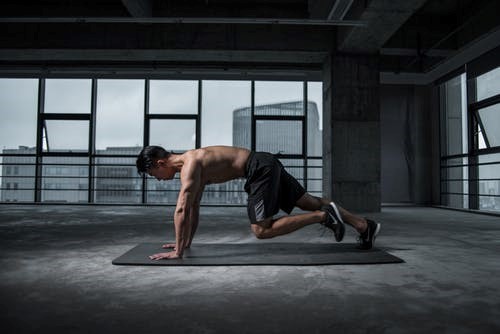Getting back into running? Don’t let knee pain get in the way!

The weather is getting warmer, most gyms are still closed, and many of us are stuck at home for the better part of our day. One thing well within our reach is a good run. Running is not only one of the most accessible and beneficial forms of exercise, it also allows us to take advantage of nature’s Vitamin D and tap into some of that mental wellness everyone keeps talking about.
Here at AITC, we often see clients with knee pain that started, or was exacerbated by, running. We have found that with the right preparation and adjustments you can maintain a healthy running program without pain. Whether you’re a seasoned runner or just getting started, we’d like to offer some helpful tips to keep your knees healthy and pain-free.
Let’s start with some basic principles!
- Be smart about your pace. Start your first few runs at a slow, steady pace with rest days in between. Don’t increase your mileage or pace too quickly- the loading on the lower extremities is said to be 2.5 times a person’s body weight during a run. That repetitive force can lead to early injury and strains if you are ramping up too quickly.
- Start flat. Get your body used to the impact of running on flat, even terrain before you try and conquer the hills.
- Listen to your body. Running is a high impact activity that significantly loads the knee joints, and injury can occur with the mentality of “just pushing through” discomfort. As you start out, listen to the way your body reacts to your first several runs. What part of your body is sore the next day? Is it just soreness, or is it pain? Does the soreness or pain persist for several days, or subside in 24-48 hours? This may be a no-brainer, but pain (not soreness) is not normal.
If you are starting to have pain, give yourself enough time for your symptoms to subside, and consider the following about your runs:
- Check your mechanics:
- Notice where your foot is striking the ground as you run. If you are striking at your heel, you are sending too much force through the knee joint. Aim for a midfoot strike, with your foot landing beneath your hips, not out in front of you.
- Notice if your feet are pointing in or out, rather than pointing forward.
- Your core should be engaged while you run, with your torso shifted just slightly over your hips.
- Check your footwear:
- A runner’s shoe needs to support their specific foot structure. Are you someone with “flatter arches” who tends to over-pronate as they walk/run? A shoe with more stability in the medial arch will give you the best support and alignment for your knees. Or if you have higher arches, you might need a more supportive shoe, with cushioning along the lateral aspect of the shoe. Have a professional take a look at your gait and foot structure to recommend the best pair of shoes for you.
Be PROACTIVE about injury prevention!
While running-related injuries are fairly common, we believe that taking these few extra steps is your best defense against knee pain. It’s well worth the extra effort to increase your longevity as a runner.
Don’t forget your warm-up:
Knee pain can occur by repeatedly neglecting to activate the muscles that help prepare you for running. Research over the years has exposed the ineffectiveness of “static” stretching, while supporting the many benefits of a dynamic warm up. In other words, the few seconds you take to reach for your toes before running, does not do a whole lot for your flexibility or muscle preparation for running. Dynamic movement is a much more sport-specific way to prepare your body for the movement patterns of the run and increase blood flow to the areas your body relies on to get through a run.
Combine some of the following activities for your warm up:
- Leg swings, knee to chest pulls, high kicks, forward/side lunges, calf raises, butt kicks, high knees, body weight squats, jumping jacks, skips, side shuffles, carioca.
- Perform each activity 10-20 times for a 5-10 minute warm up.
Runner-Specific Strengthening:
As running places unique demands on one’s body, so should your strength program be designed to keep your muscles balanced and moving forward. Strength training can not only help you prevent injury, but can also increase the speed, stride efficiency and coordination of your run.
It is important to address the key players in your strength program that support patellar alignment: lateral/posterior hip muscle strength, core strength, ankle mobility, and foot intrinsic strength. Here are some example exercises:
Hips & Core:
- Prone planks variations: shoulder taps, side toe taps
- Deadbugs
- Stability ball roll outs
- Bird dogs
- Side plank variations
- Band walks
Ankle & foot:
- Ankle mobilization to improve dorsiflexion
- Single leg balance
- Foot intrinsic strengthening, with focus on arch activation
Stay tuned for a video post for our runner-specific strength program!
